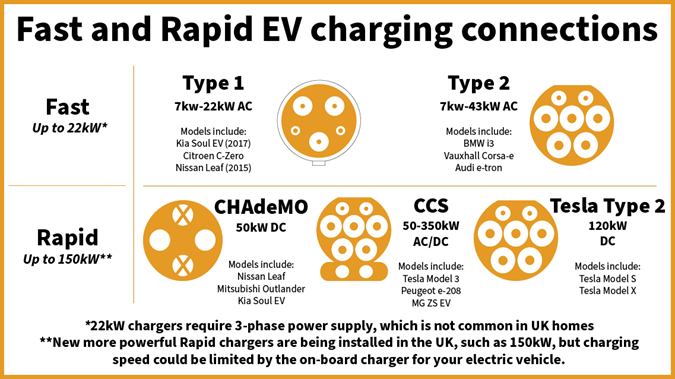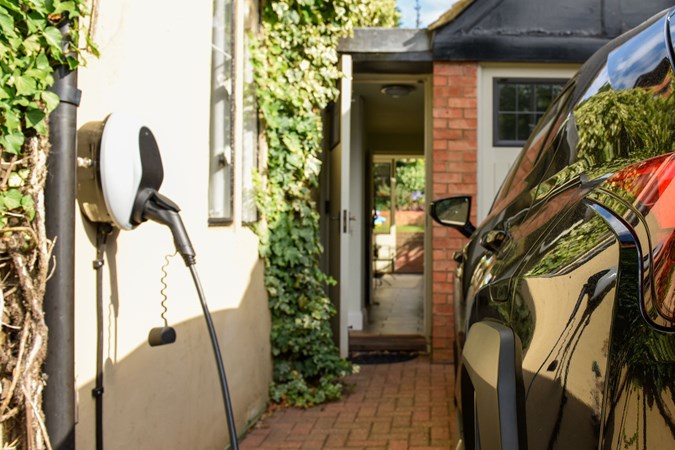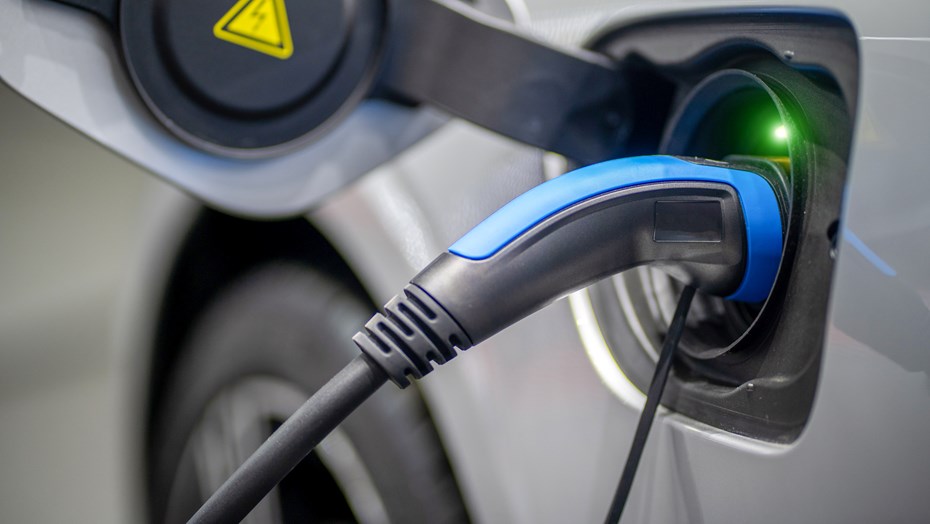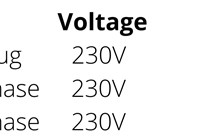Navigating the world of electric vehicles can feel daunting and, frankly, confusing for prospective buyers who haven’t yet ventured into the electric market. With over one million plug-in cars now on UK roads in 2024—up from around 850,000 in 2022—it’s clear that the rise of electric and plug-in hybrid vehicles is reshaping the automotive landscape.
With more people switching to plug-in cars every day, understanding EV and plug-in charging at home is crucial. Getting to grips with terms like voltage, kilowatts, and charging currents—among many others—can seem worlds apart from the usual MPG, gallons, or litres. But fear not, we are here to simplify it all, below you’ll find our informative and easy-to-follow guide to home charging.
Amps, Voltage, and Watts
Now, let’s dive into some basic electrical terms. Don’t worry—it’s easier than it sounds and just needs you to recall a bit of that high school science but in a much simpler way.
- Amps: This measures the flow of electricity, or how much electrical charge is moving through a circuit. Think of it like water flowing through a pipe—the more water, the higher the flow.
- Voltage: This is the force that pushes the current through the circuit. Imagine it as the water pressure—more pressure means more power to push the flow.
- Watts: This is the final output of power you get. It’s a result of how much current (amps) and voltage are working together. The higher both are, the more power (watts) you get.
In simple terms: Power (Watts) = Voltage x Current (Amps).
So, just think of amps as the flow, voltage as the push, and watts as the final power.
In relation to car chargers…
Residential buildings usually have a standard 230V power supply. A regular plug socket uses a 13A current, while home EV chargers use either 16A or 32A. To figure out the power of your charger, simply multiply the voltage (230V) by the current (either 16A or 32A), which gives you how much power the charger can provide.

EV chargers give you this information, of course – it just helps to understand what they mean. Now that you know how much power a given charger has, you can work out how long it will take to charge a car battery.
For example, a Nissan Leaf with a 40kWh battery, using a 13A home plug, will charge at a rate of 3 kilowatts per hour and therefore take about 13 hours to fully charge (40 divided by 3). Naturally, the 32A plug will charge the battery faster in under six hours. Of these three single-phase options, the 32A is the only one considered a ‘fast’ charger.
Only with three-phase power supplies can you get into faster and rapid charging, as you can get with some public chargers. Unless you have a workshop at home that uses heavy machinery demanding of a three-phase power supply, your home won’t have it. And to be honest, there is no need for you to go and get it installed just for your car charger. When you’re out and about and want a quick top-up, that is when you want rapid charging. However, when you get home at night, the car is going to be plugged in overnight for several hours anyhow, which is usually ample time to fully charge batteries.
Our recommendation is to look at a 32A single-phase setup. This will fully charge a Peugeot e-208 with a 50kWh battery in under seven hours, and Porsche Taycan with a 79.2kWh battery in under eleven hours. That’s fully charged – empty to full. Since we don’t tend to run our EV batteries completely flat, the charge time will be less than this.
A quick note on EV range: A kilowatt-hour (kWh) is simply how much energy a device using 1,000 watts burns through in an hour. Car manufacturers typically rate EV efficiency in miles or kilometres per kWh. For example, if a Nissan Leaf can do 4.2 miles per kWh and has a 40kWh battery, you’ll get just under 170 miles of range (4.2 miles x 40kWh).
Plug Types

Current plug-in cars can be charged via two means: slow and fast charging, or via rapid charging; although, some older electric vehicles do not have the rapid-charge option.
The slow/fast charging cable will be either a Type 1 or Type 2. Type 2 connectors are by far the most common – it’s what you’ll find on a Hyundai Kona Electric, Renault Zoe, and Jaguar I-Pace to name but three. The Type 1s are usually found on older plug-ins, but they can still connect to a Type 2 charger because the cable will have a Type 1 connector at one end, but a Type 2 at the other. Thus, we can safely call Type 2 plugs universal.
Rapid chargers come in two types as well. The most common is the Combined Charging System (CCS) socket. This type of socket is a Type 1 or 2 plug with the CCS DC rapid charge connector attached at the bottom (see above). This means you can plug in your car at home on the slow or fast charger using the Type 2 connection, but you can also use the public rapid chargers with the CCS connection beneath when you need to.

The other type of rapid charging socket is the CHAdeMo socket, which is used on a few electric cars and has largely been phased out on the new EVs, though cars such as the Nissan Leaf and Lexus UX300e do use it. As we noted before, you won’t be able to install a rapid charger at home without a three-phase power supply. You can use Zap-Map to help you find public charge points.
Is the Electric Vehicle Homecharge Scheme (EVHS) still available?
No, the Electric Vehicle Homecharge Scheme ended in March 2022. It has been replaced by the EV Chargepoint Grant, which is now only available to renters and flat owners with access to off-street parking. If eligible the government will give you up to £350 or 75% of the installation cost for a home chargepoint.
In the same way you can get a government grant of up to £3,000 for certain plug-in vehicles, the Office for Low Emission Vehicles (OLEV) also offers a grant for plug-in home chargers. Provided you comply with the fairly simple requirements, the government will contribute up to £350 towards the installation of your new home charger.
FAQs
-
How many public charging points are there in the UK?
As previously mentioned, the number of public charging stations is growing in order to keep up with the intense spike in EV demand - particularly those offering rapid charging capabilities. As of August 2024, there were 68,273 public electric car charging points across the UK, across 35,230 charging locations - according to Zap-Map. Compared with 19,823 installed since August 2023, this represents a monumental year-on-year increase of 41% in the number of public devices. So, should you be caught out in your EV, away from home and in need of some juice - you're well covered.
-
Can I charge multiple EVs at the same time?
Charging multiple electric vehicles at home is indeed possible, but it largely hinges on two key factors: the type of charger you have and the capacity of your home’s electrical system. Some modern home chargers come equipped with the capability to support multiple connections, allowing you to charge two or more EVs simultaneously. However, to do this safely and efficiently, you may need to upgrade your electrical system. This could involve installing a more powerful supply or additional circuit breakers to handle the increased load. Before diving in and doing this, always get in contact with a qualified electrician who can assess your home's infrastructure and recommend the best solution for your charging needs.
-
Can I use solar panels to charge my EV?
Yes, you can definitely use solar panels to charge your electric vehicle, and it’s a great way to cut down on energy costs while reducing your carbon footprint. For the best results, a solar battery storage system can store energy for overnight charging. It’s an upfront investment, but long-term savings can make it worthwhile.
Sign up to the Parkers Newsletter to keep up to date with more of the latest reviews, news, and recommendations from the Parkers team.
Just so you know, we may receive a commission or other compensation from the links on this website - read why you should trust us.










